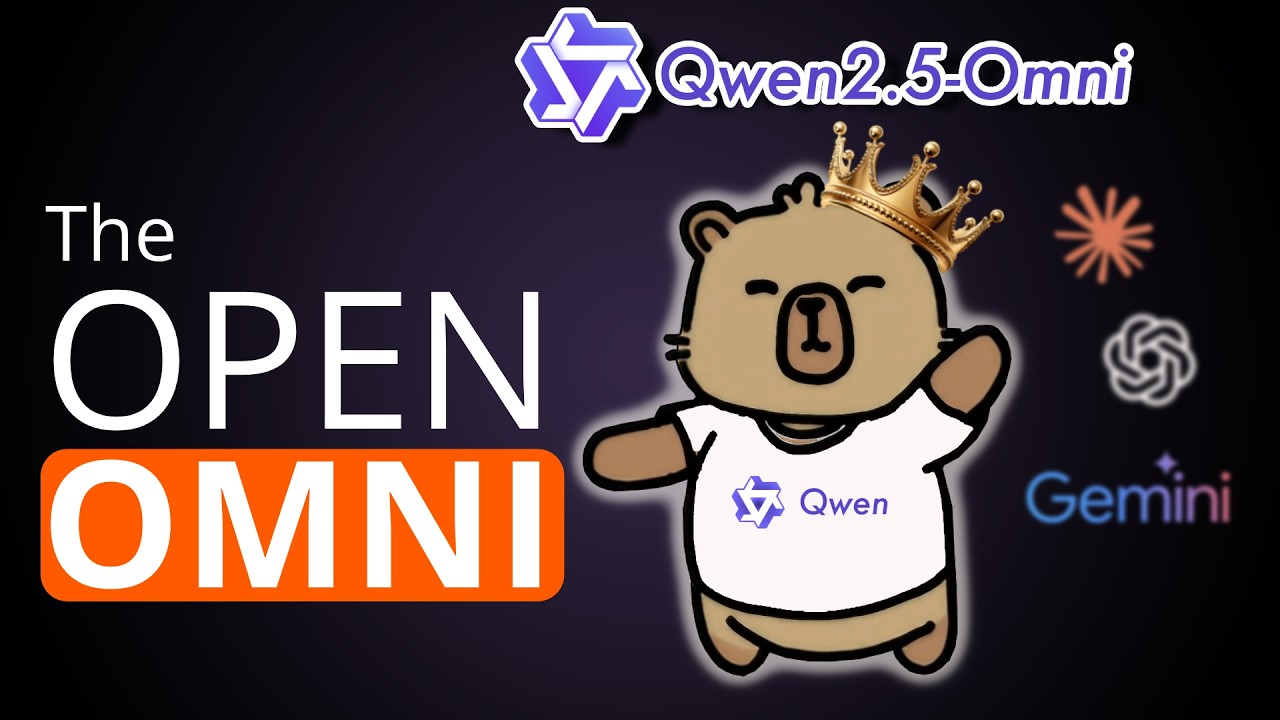The video introduces Qwen 2.5 Omni, a new multimodal open-source model capable of processing text, audio, video, and images, and producing outputs in both text and audio formats, with real-time streaming responses. It highlights the model’s innovative architecture, impressive performance despite having only 7 billion parameters, and encourages viewers to experiment with it in a coding environment due to its open-source nature.
The video discusses the release of Qwen 2.5 Omni, a new multimodal open-source model from Qwen. This model is notable for its ability to handle various types of inputs, including text, audio, video, and images, and can produce outputs in both text and audio formats. The presenter highlights that this is Qwen’s first Omni model, emphasizing its accessibility for users who want to download and experiment with it for their projects. The model is designed to provide real-time streaming responses, making it a significant advancement in the field of language models.
The video showcases a demonstration of the Qwen 2.5 Omni’s capabilities through a voice chat interaction. The model responds to questions and can even interpret audio commands, such as recognizing the number of fingers held up by the user. The presenter notes that the model performs better than previous iterations, like Moshi, by providing more accurate and contextually relevant responses. The ability to switch between different voices adds to the model’s versatility, making it suitable for various applications.
The architecture of the Qwen 2.5 Omni is explained in detail, featuring a “Thinker” and “Talker” system. The Thinker acts as the brain of the model, processing inputs from the vision and audio encoders, while the Talker generates audio outputs based on the representations created by the Thinker. This end-to-end design allows the model to efficiently handle multimodal inputs and outputs, with a focus on real-time performance. The presenter highlights the innovative tokenization system that enables the model to manage temporal information from audio and video inputs effectively.
The video also touches on the model’s performance compared to other leading models, such as OpenAI’s and Google’s offerings. Despite having only 7 billion parameters, the Qwen 2.5 Omni demonstrates impressive capabilities, suggesting that smaller models can still achieve significant results in multimodal tasks. The presenter emphasizes the importance of open-source models like Qwen 2.5 Omni, as they allow developers to experiment and innovate without the constraints of proprietary systems.
Finally, the video encourages viewers to explore the model further by trying it out in a coding environment. The presenter provides guidance on setting up the necessary software and demonstrates how to interact with the model, showcasing its ability to generate coherent and contextually relevant responses. The open-source nature of the model is highlighted as a key advantage, allowing users to modify and adapt it for various applications. The video concludes with an invitation for viewers to share their thoughts and experiences with the model, emphasizing its potential for future developments in AI technology.
